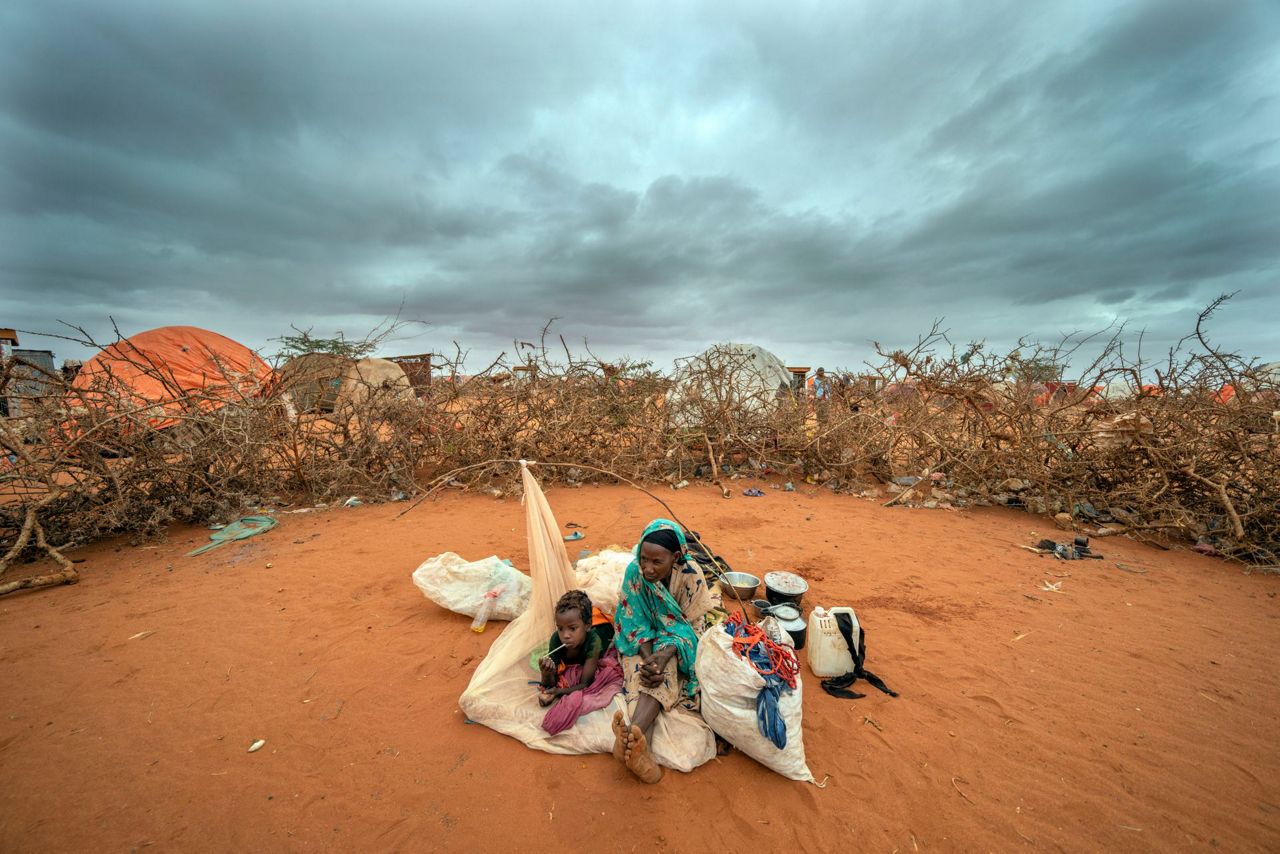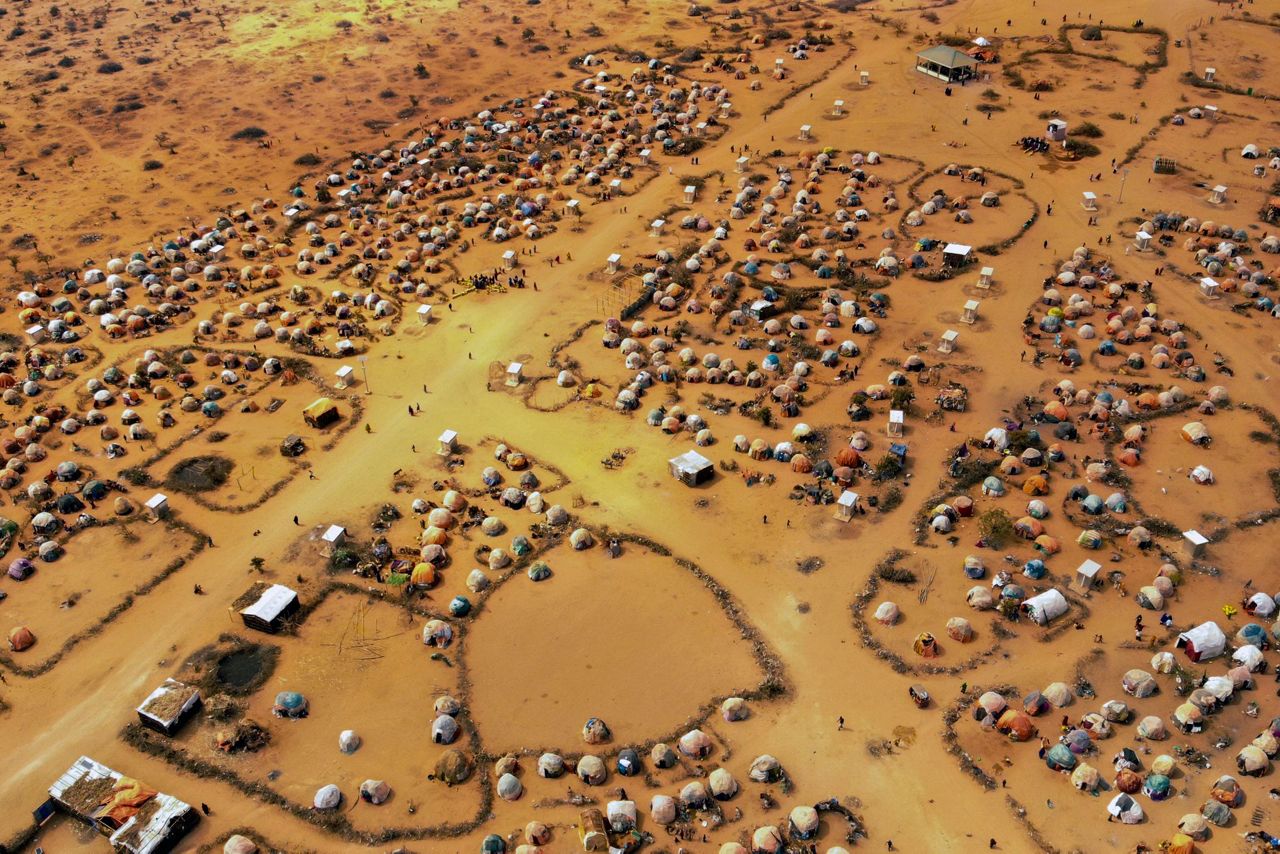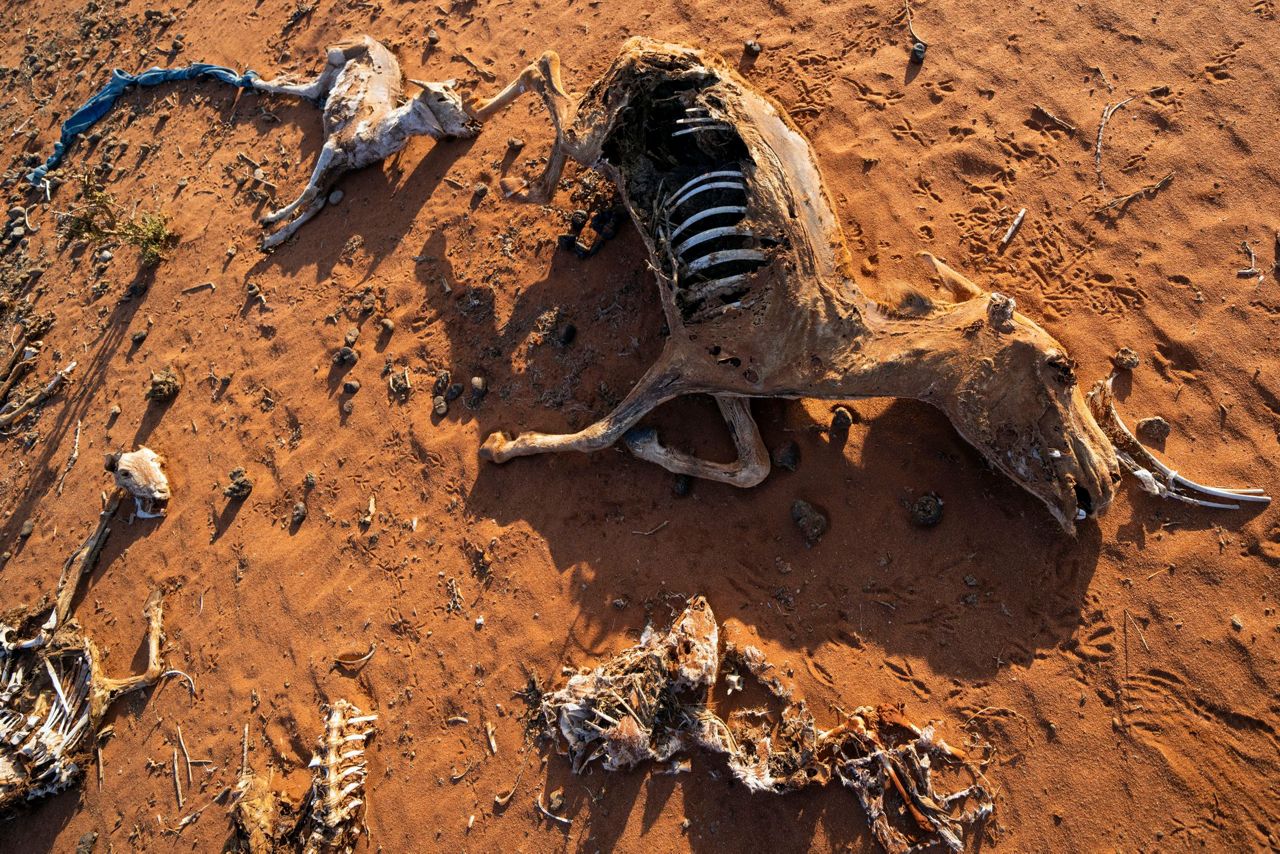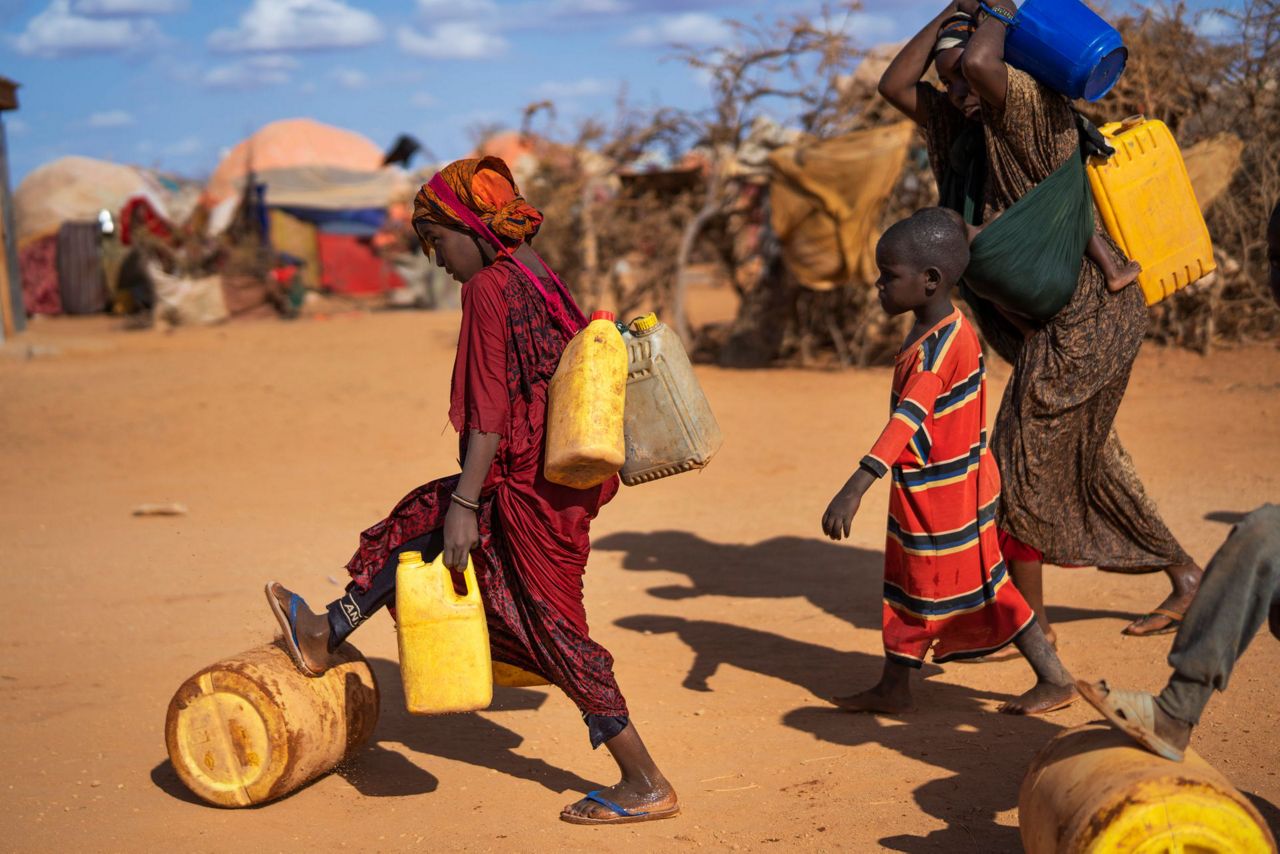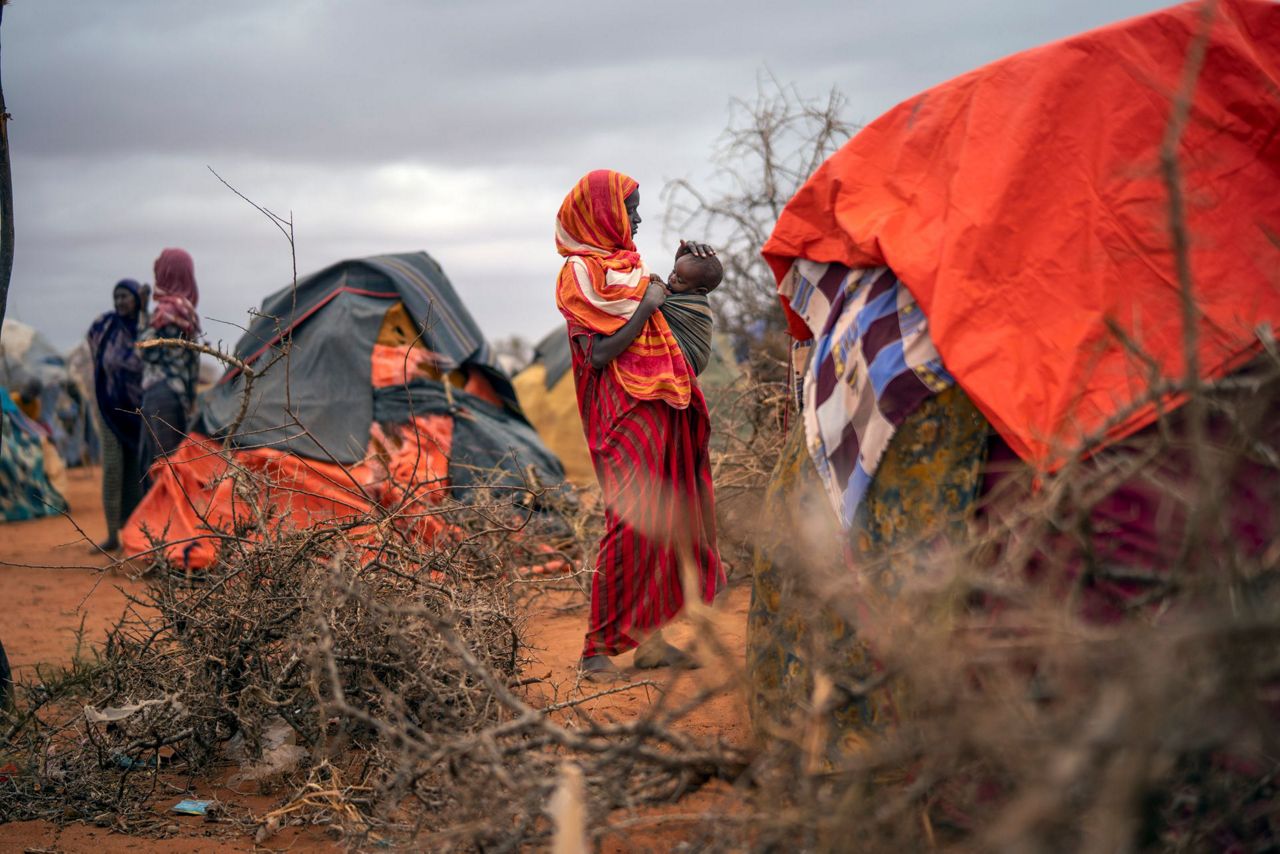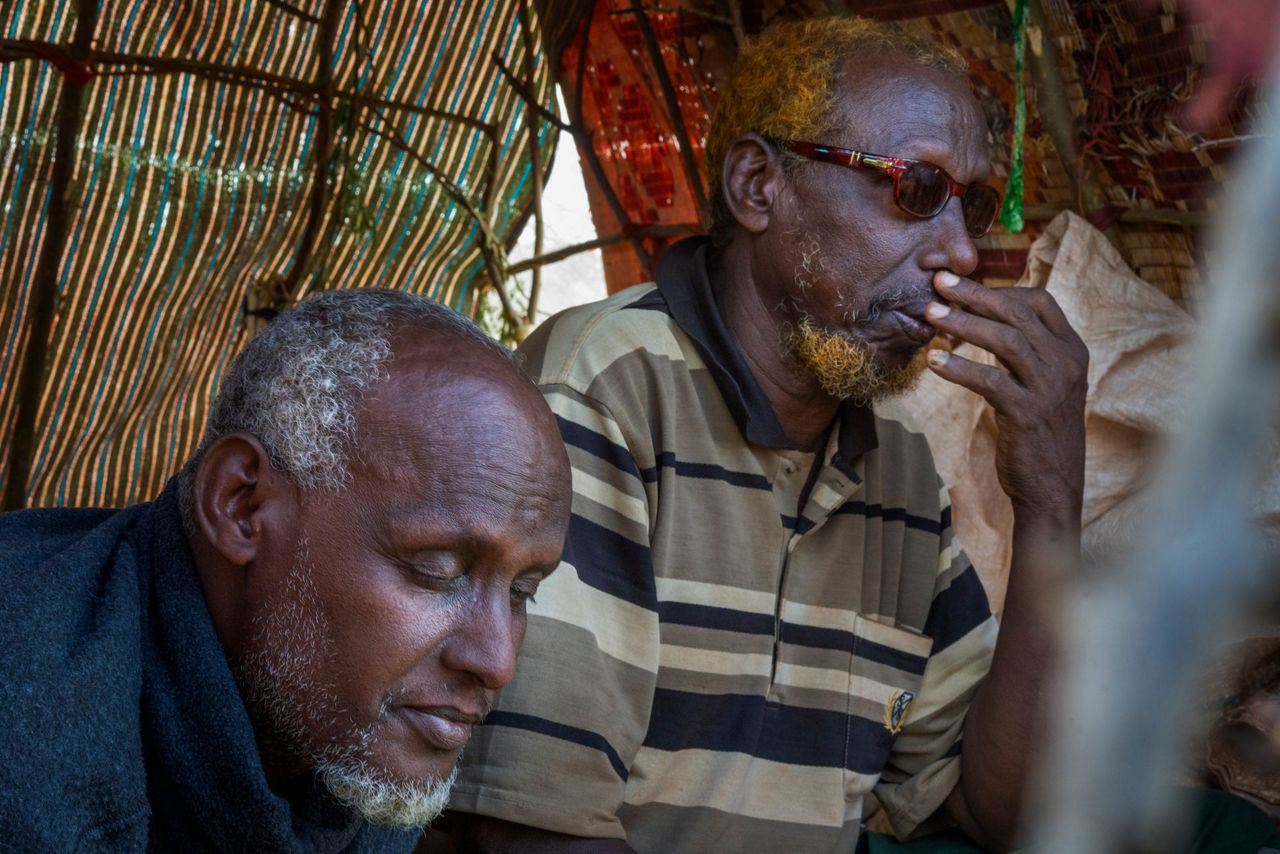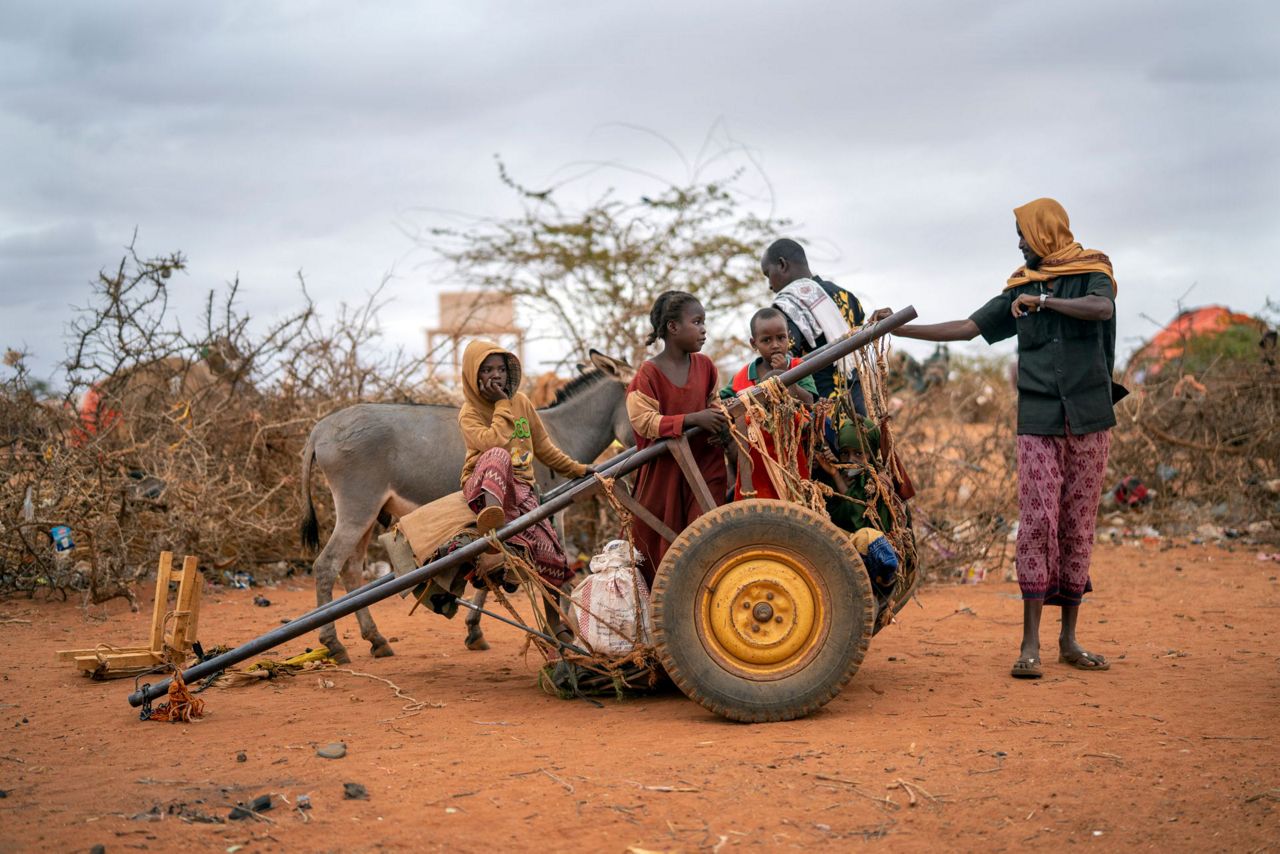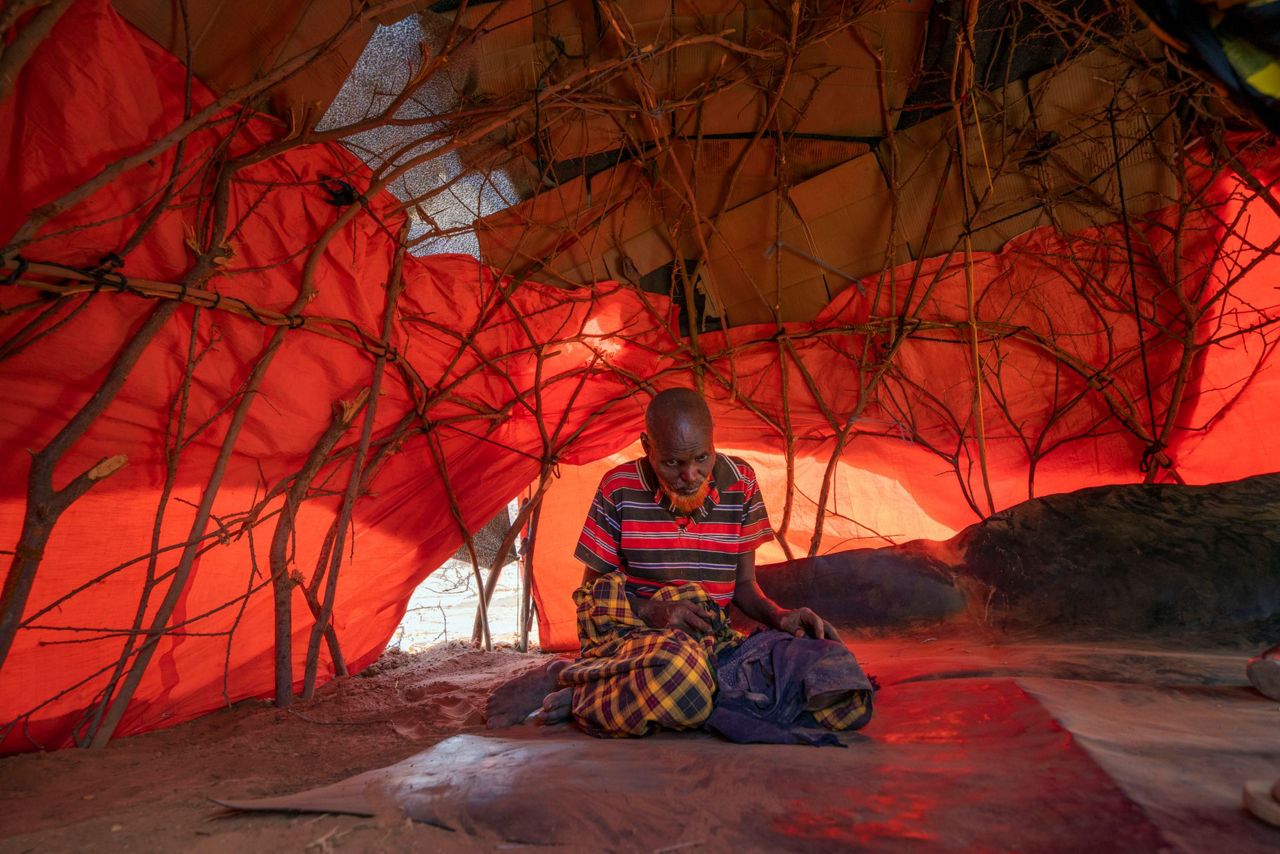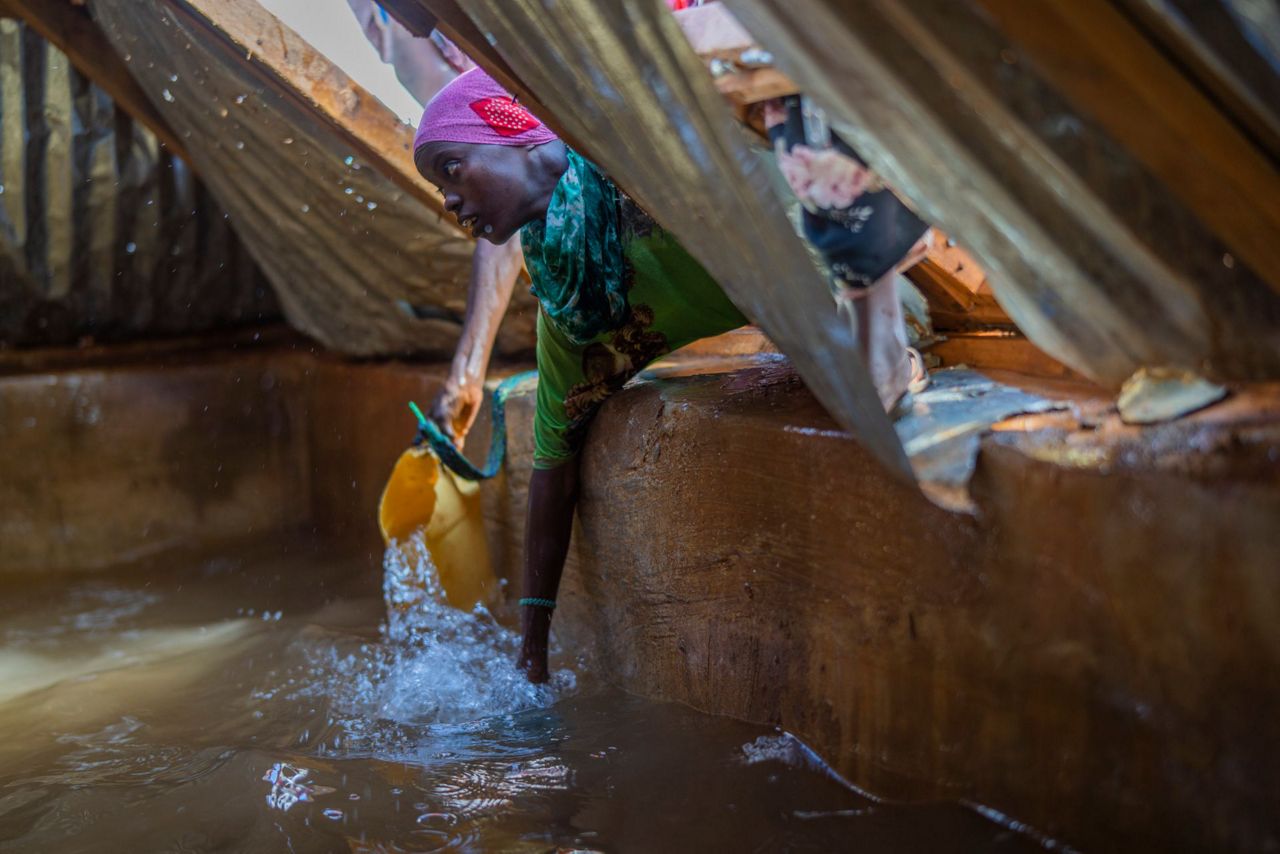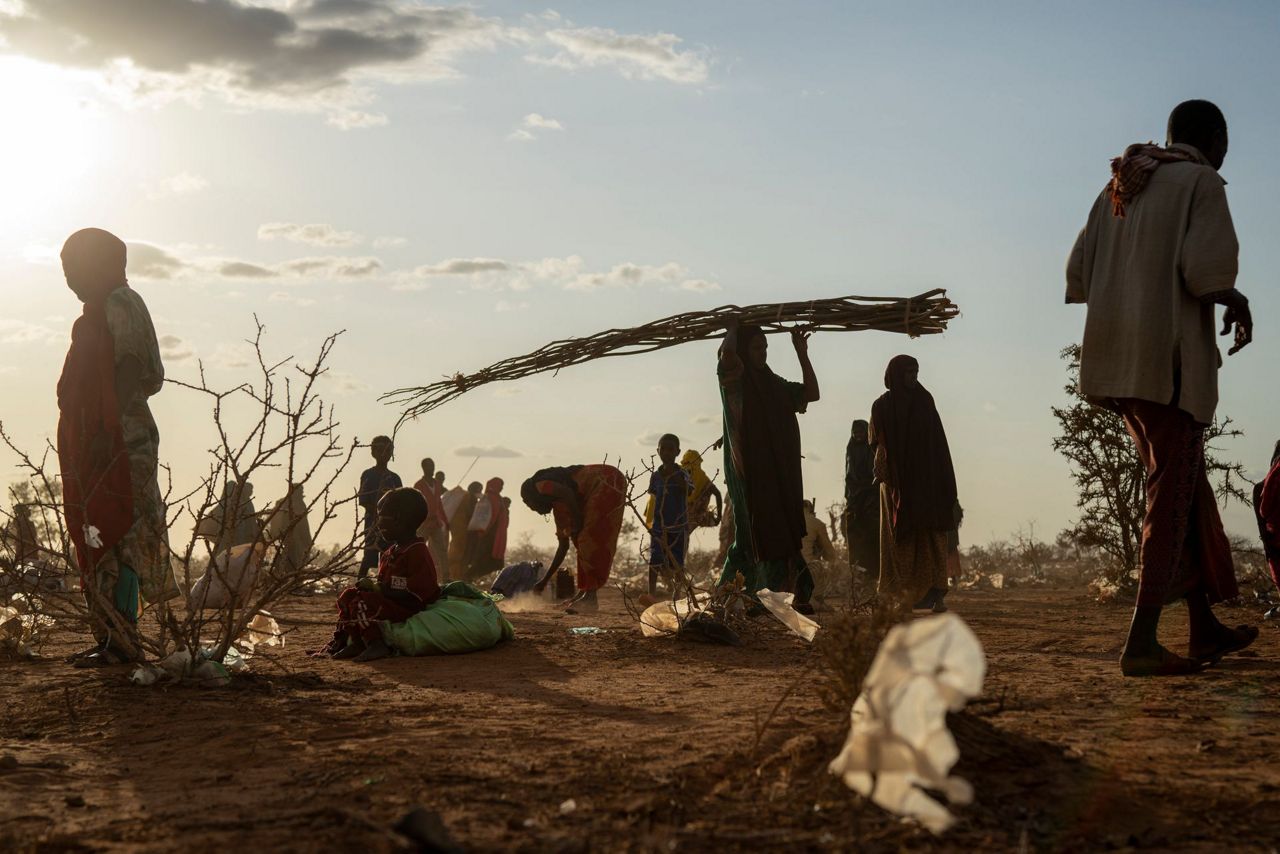DOLLOW, Somalia (AP) — Blindness heightens the remaining senses. The thud of a toppling camel is more jarring, the feel of tightening skin more acute, the smell of death thicker after weeks and months and then years without the rain that’s needed to survive.
Perhaps, as panic rose with the wind, Mohamed Kheir Issack and Issack Farow Hassan could even taste the coming famine.
Issack is 80, Hassan 75. The two men are friends and as close as brothers, gripping each other’s hands in their mutual darkness as tightly as they hold their canes. Near the end of their lives, the most alarming drought in more than half a century in Somalia has stripped them of their animals and homes.
The Associated Press first met them crouching together in the dust. They were among hundreds of people who had arrived in this border town in recent days, part of an unwilling migration that has seen more than 1 million hungry Somalis flee.
___
EDITOR’S NOTE: This story was produced in partnership with the Pulitzer Center on Crisis Reporting. This story is part of an ongoing series exploring the lives of people around the world who have been forced to move because of rising seas, drought, searing temperatures and other things caused or exacerbated by climate change.
___
Somalia has long known droughts, but the climate shocks are now coming more frequently, leaving less room to recover and prepare for the next. Pastoralists and farmers who have known for generations where to take cattle, goats and camels when the usual water sources run dry have been horrified by this drought that has seen four straight rainy seasons fail.
“Droughts before were not like this. We were able to withstand them,” Issack said.
When rain does fall, more unpredictably now, hotter temperatures mean it evaporates faster, leaving meager amounts for farming or drinking. East Africa is the world’s hardest-hit drought region, according to the U.N.’s desertification agency.
Experts say forecasts indicate that the fifth rainy season now underway will fail, too, and even the sixth one set for early next year. With that, Somalia will be in uncharted lands beyond the memories of even Issack, Hassan and their age-mates.
The two men had always lived in their southern community of Ufurow, about 300 kilometers (186 miles) away, and had never moved from it until now.
Somalia is now said to have the world's fastest urbanization rate as so many people like them emerge from rural areas and cluster around potential sources of aid.
“They know before we do that their way of life is over,” U.N. humanitarian chief Martin Griffiths has said.
Here outside the southern town of Dollow, Issack and Hassan waited patiently in the late afternoon light, a wall of children and slender mothers behind them. Long strings of prayer beads were around their necks, a battered mobile phone in a pocket.
On the edge of the rapidly growing camp for displaced people, an official was drawing lines in the dust. He was marking squares, a hopscotch of future homes for the waiting families. What they would build on the spaces little bigger than a king-sized bed, and where they would find the materials, would be their problem.
For Issack, Hassan and the rest, the huts would be better than sleeping under the stars, with thorn bushes giving no protection from the mosquitoes and grit flung by the wind. Families hurried in the last hour before sunset to occupy their squares, digging with twigs to make holes for poles of stripped branches.
Twenty-four hours later, their section of the camp looked like any other, with plastic sheeting and fabric, even strips of mosquito nets and clothing, stretched around the branches.
Issack lived in one hut built by his wife, Hassan in another built by his sister.
As fragile as their new existence was, Hassan pounded the dust with his metal cane when asked if they could ever go home again. Absolutely not.
That’s in part because their area of Somalia is controlled by an extremist group, al-Shabab, which other people who fled described as having little pity as crops withered and livestock died by the millions. The extremists, affiliated with al-Qaida, continued to heavily tax residents by asking up to half of their harvest, even as people began to starve.
Because al-Shabab makes it almost impossible to reach areas under their control with humanitarian assistance, their presence has played an especially deadly role in droughts. An estimated quarter-million people died in the famine declared in Somalia in 2011, many because al-Shabab wouldn’t allow most aid in or, often, suffering people out.
This time, those arriving told the AP that the extremists are allowing some of the mothers, children and elderly who have lost everything to flee.
The fighters stopped and checked the small vehicle carrying Issack and Hassan from Ufurow, then let them pass for their three-day journey here.
“They didn’t want us,” Issack said.
The men know that as blind and elderly they are among the most vulnerable, used to being left behind even in normal times. While the camp growing around them is roughly organized around the communities that people fled, and Ufurow residents remain their neighbors, the frame of reference has shattered.
“The problem is, we can’t see who’s here from home or how many of them,” Issack said. It will take time to build a mental map of their surroundings, of whose child wanders by, wailing, or who might be coughing in the hut a few meters away.
“We don’t know what’s happening around us,” he said, an extreme of the sentiment the thousands of displaced people in this town are feeling, too.
Their new neighbors gave the men materials to help build their huts. They had arrived with little but utensils and their clothes. The day before moving in, they managed to find a little food and cooked it. It’s a step forward from just tea, the meal for many as the aid that had been rumored here is delayed or lacking.
Everything in this new home is unsettling, even undignified. “We have no toilets,” Hassan said, and described having to go inside the hut while others collected his feces.
“Today, at least we have this,” Issack said, sitting on a foam mattress in a living space he could almost span by reaching out both hands.
A loaded donkey cart arrived nearby, full of boys, the oldest with the reins. Their mothers walked beside it, carrying babies. As newcomers, they’ll sleep on the ground until they, too, receive a square drawn in the dust.
They were among 77 households who arrived at the camp on a single day.
The two old men agreed that life and death are in the hands of Allah, and they will die when the time comes. Unlike others in the camp, they are unable to work for themselves. If they want to walk to the registration center to seek help, someone must take them by the hand and guide them.
Their families and friends from home have scattered. The drought has made everyone leave.
Some went to Baidoa, a grim choice as the city swells with an even larger number of people fleeing nearby areas where the U.N. has warned that famine could occur as early as October.
Issack and Hassan’s links to those friends and family facing the worst of Somalia’s drought are frailer than most. Hassan’s phone is at hand, but use of it is limited.
“I cannot dial,” he said, frowning slightly at the ground, “but I can answer.”
___
Associated Press climate and environmental coverage receives support from several private foundations. See more about AP’s climate initiative here. The AP is solely responsible for all content.
Copyright 2022 The Associated Press. All rights reserved. This material may not be published, broadcast, rewritten or redistributed without permission.




